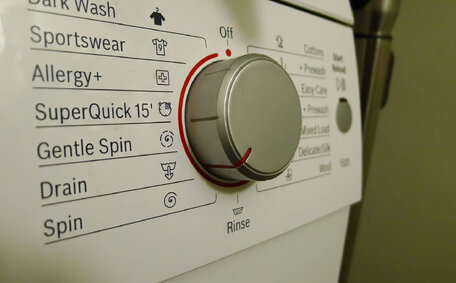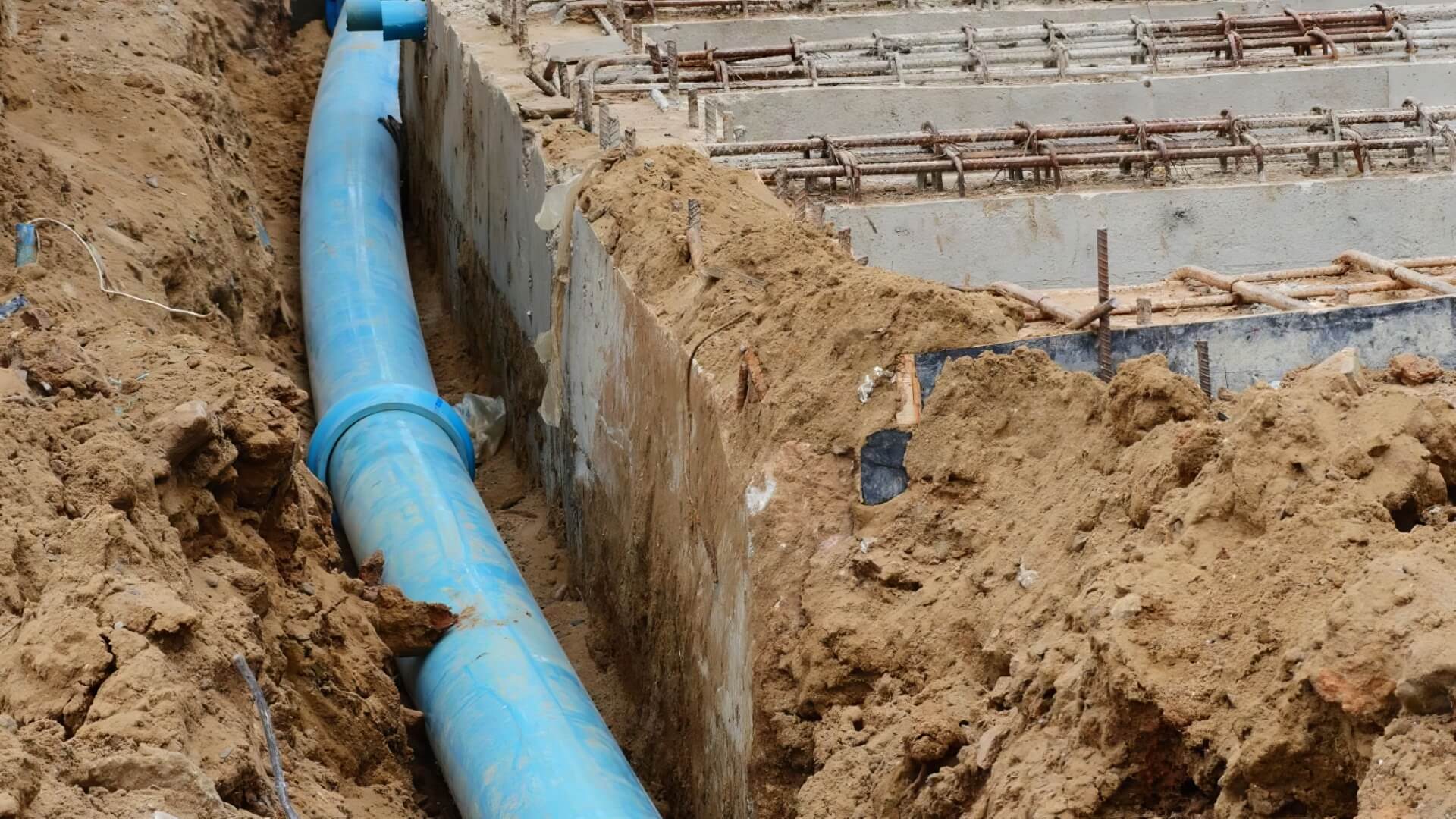How Construction Debris Ends Up Blocking Drains
Construction debris, including bricks, mortar, tiles, concrete, and rubble, significantly contributes to blocked drains during building projects.
Poor material handling, inadequate waste disposal, and exposed pipes often lead to dirt and other debris clogging your home’s plumbing. Additionally, using low-quality or defective materials in drainage systems, along with tree root intrusion, can result in early-onset drain blockages.
During rainstorms, waste such as broken bricks, sand, and stones from building sites may enter drains and cause clogs.
Debris such as offcuts from sewer pipes, seals, wrappings, and fittings, coupled with tree roots, may get flushed into the drainage system during rain, causing blockages. Direct dumping of debris into open drains frequently occurs on construction sites, leading to widespread blockage issues. Once inside, loose debris accumulates in your home’s drain pipes, triggering subsequent blockages.
According to the EPA South Australia, the average construction site generates up to 1.2 tonnes of waste per 100M2, of which improper disposal can severely impact drainage systems.
Thus, strategically managing onsite debris becomes crucial to prevent blocked issues within your new home and booming residential havens like St. Marys.
Most Common Types of Construction Debris Found in Drains
Masonry Products
Fragments of bricks, concrete, mortar, and tiles infiltrate your home’s pipes during construction, causing drain blockages. As these materials crumble from use, small pieces can enter your plumbing system through open pipes or damaged covers.
Non-biodegradable and abrasive, masonry debris can damage drain pipes and quickly accumulate, causing blockages that impair water flow. A 2020 Sydney Water report indicated that such particles contributed to 37% of residential drain clogs.
Sedimentary Stones
Drains can become clogged with gravel, pebbles, sand, and other substances washed in during foundation works or landscaping. Typically ranging from a few millimetres to centimetres in size, these coarse-grained materials make their origin from excavation activities onsite.
These particles, less than 100mm in diameter, can enter household pipes and cause a series of blockages. Over time, substantial buildup within pipes can lead to extensive damage and costly repairs.
Wood Shavings and Sawdust
Shavings or sawdust from carpentry work onsite can enter and easily clog unprotected drain pipes due to their light weight.
When moistened, this debris, coupled with soap scum and hair, can cling to pipe walls and choke the pipes, risking the integrity of your plumbing system. Rotten wood shavings promote bacteria growth inside pipes, emitting gases that can cause leaks and cracks in drain lines.
Signs Your Drain is Blocked With Construction Debris
If construction debris clogs your drains, contributing to common plumbing problems, you may notice signs of blocked drain weaving through your home’s comfort:
- Water backs up in sinks and bathtubs, and your fixtures drain more slowly than usual
- Gurgling sounds emanating from an affected drain
- Sinks, tubs or toilets overflowing with backed up water
- Unpleasant odours near your house’s faucets
- Wet spots appearing on walls or floors around internal pipework
- Toilet failing to flush properly
- Frequent blockages after heavy rain or storms
Understanding the challenges construction debris poses to stormwater drains is crucial, especially in developing suburbs like St. Marys, where the effects may be more intense compared to other Sydney areas. Larger volumes of water runoff due to local topography and partial pipe networks also increase risks further
Using Drain Cleaners and Plungers to Clear Debris
Homeowners can use drain cleaners and plungers as DIY methods to clear minor blockages from construction debris before seeking professional help. Following safety guidelines and product instructions is crucial to preventing injury and complications.
Using Chemical Drain Cleaners
When using caustic drain cleaner products:
- Review safety information and application directions
- Ensure good ventilation by opening windows
- Wear gloves and eye protection
- Pour cleaner directly into the blocked drain then wait the recommended time before rinsing with water
To make sure you are operating safely, it’s advised to avoid mixing with other chemicals. If you suspect that considerable debris has accumulated, its time to call a plumber.
Using a Plunger
For kitchen sinks, basins, or showers, a mixture of baking soda and vinegar can effectively tackle blockages:
- Fill the fixture with a few inches of water from your water heater to cover the drain of your sink or tub
- Place a plunger firmly over the drain and move it up and down with steady pressure, effectively managing the flow of water down your drain
- Flush with boiling water once blockage clears
For your toilet, ensure no contents such as excess toilet paper are present before attempting to plunge debris down toilet openings.
Professional Drain Cleaning Services for Stubborn Blockages
While DIY cleaning can provide short-term fixes, persistent issues may require professional assistance to fully resolve.
Qualified tradespeople, our team has the specialised equipment to clear blocked drains professionally and assess and resolve related issues. This includes:
- High-pressure hydro jet drain cleaners to reliably clear heavy blocked drain your property may encounter
- Industrial-grade CCTV drain cameras to locate debris buildup and damaged pipework
- Safe techniques to extract hazardous materials from drains
We also tackle your blocked drain needs with proactive drain maintenance, essential in debris-prone newly developed areas like St Marys. With extensive knowledge of your local plumbing system, call our office on 1300 349 338 for reliable clearing of stubborn blockages that find its way down your drains.
Tips to Prevent Construction Debris Entering Drains
Cover All Drains and Pipes
Covering all drainage entry points with protective screens or filter cloth is crucial during construction works. Temporary covers prevent foreign objects and ensure materials such as soil and rocks, or even leaves can be blocked from intruding where a drain can be compromised more thoughtfully while allowing water flows.
Design Effective Traffic Flow
Controlling site vehicle movements effectively prevents accidental drain obstructions and promotes well-maintained drainage infrastructure. Establishing and sticking to clear transit routes between material storage and work zones can help minimise accidental debris entry into drains.
Provide Enclosed Waste Collection Bins
Use watertight bins to collect construction debris and other materials, preventing them from being swept into drains during cleaning. Ensure regular emptying into offsite receptacles.
Inspect Drainage Post-Construction
Visually check and clean out debris accumulation within installed pipes using drainage cameras. Flush clear with high pressure jetting methods if required.
Install Protective Drain Screens
Fit removable fine mesh screens on gullies connected to drainage networks to filter out particles. Clean accumulated debris regularly.
Importance of Proper Drain Installation and Maintenance
Ensuring drainage systems are correctly installed during construction using quality materials and techniques is crucial to prevent premature failures and debris blockages downstream.
Undersized pipes may not handle the expected water flow, leading to clogs from accumulated sediment over time. Insufficient gradient phases that reduce drainage velocity can cause debris accumulation, leading to blockages in your home’s drainage system.
The use of defective or thinner-grade PVC pipes to cut costs can cause fracture failures, leading to obstructions with fragments. And improper jointing or unsealed connections in pipes which allows material ingress.
Meeting the latest plumbing codes ensures pipe-laying quality. Contact us for more details on proper bedding, support, venting, and access.
Our team’s regular CCTV camera inspections identify and remove obstructing debris effectively.
This helps preserve drainage integrity and intended functionality despite surrounding construction stresses. Contacting our team of specialists at St Marys Plumbing for professional drain services can help prevent serious blockage incidents in your pipes.
When to Call a Professional Plumber
As a homeowner in St. Marys, it’s crucial to recognise when it’s time to call your plumber to address blocked drains containing construction debris or other severe obstructions.
If DIY drain treatments like plungers, a drain snake, or baking soda and vinegar provide no relief, contacting the experts at St Marys Plumbing is advised. We have industrial-grade equipment to clear even the toughest clogs and locate damaged sections using CCTV cameras.
Arguably, if water is overflowing from fixtures or sewer drains due to extensive backups, a plumbing emergency requiring urgent attention is necessary to stave off damage to your property. Persistent foul odours are signs blocked drain issues often exhibit around drains despite attempts to clean also warrant a call for inspection and resolving.
For new constructions in St Marys, it’s recommended to seek professional drain services like high-pressure jetting or pipe relining to address debris-related issues. Investing in long-term solutions will prevent frustrating and costly blockages recurring.
Our licenced plumbers are available 24/7, equipped with the technical expertise and modern tools to solve any plumbing issue. Call us on 1300 349 338 for reliable debris clearance and future-proofing of drains.






